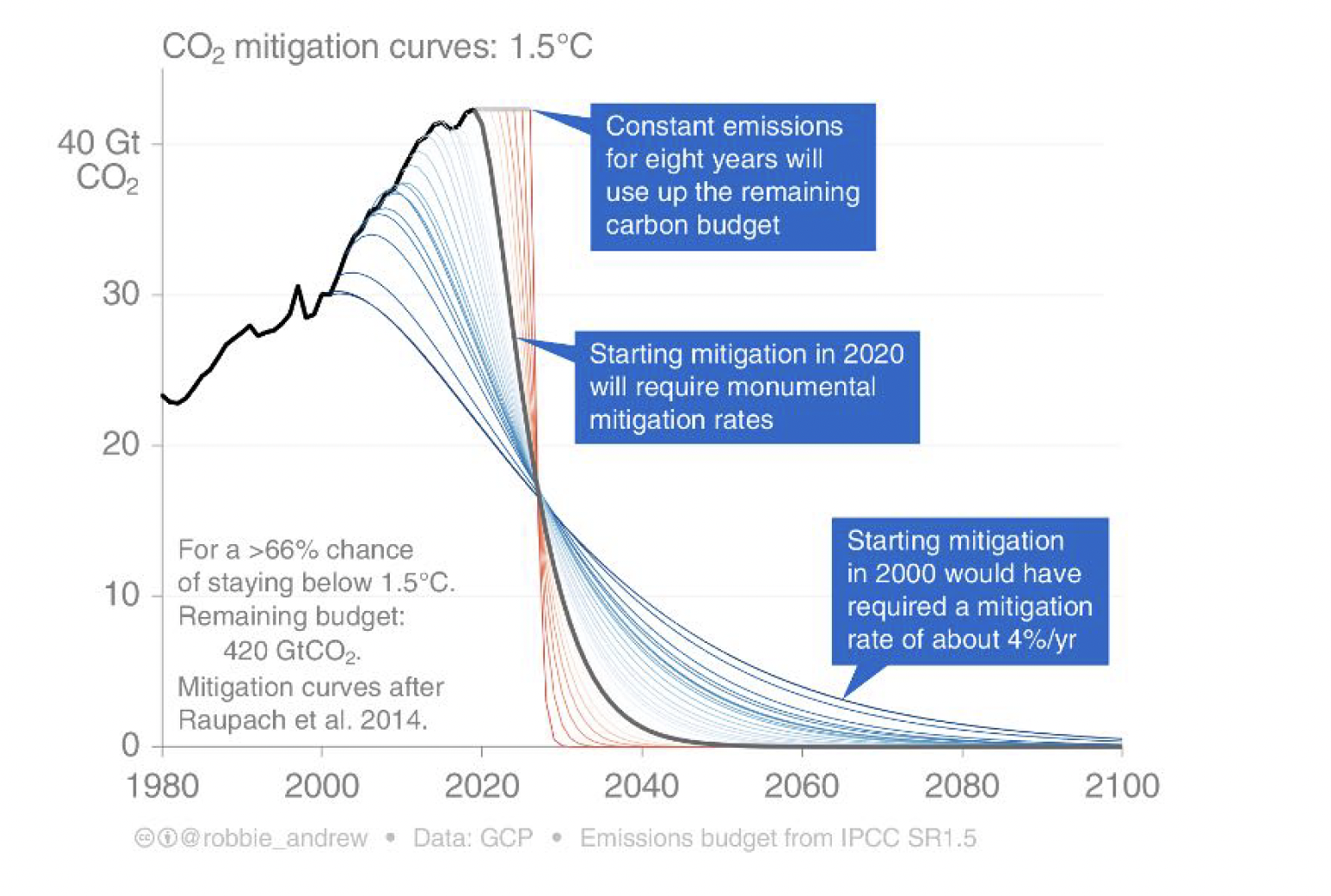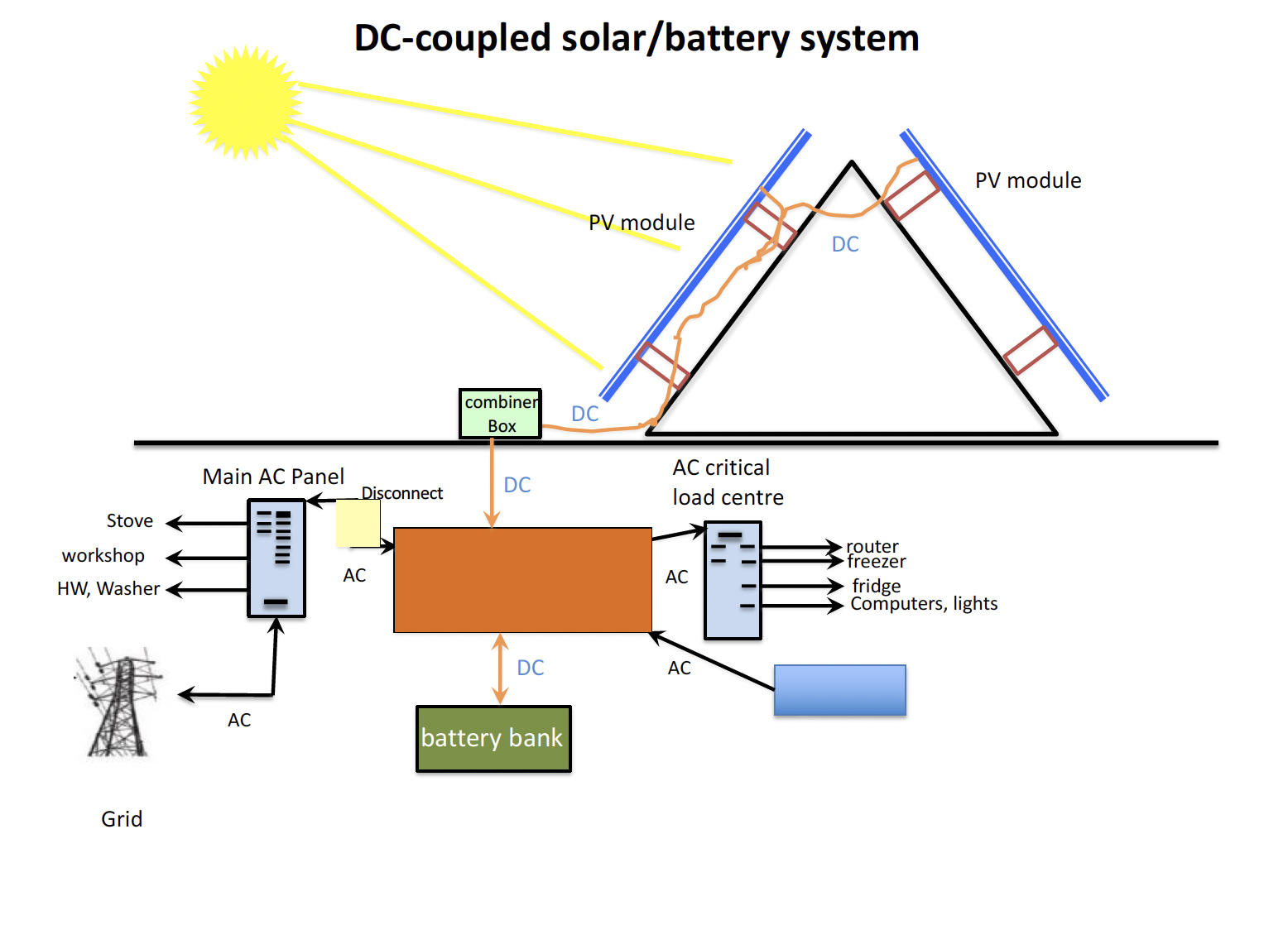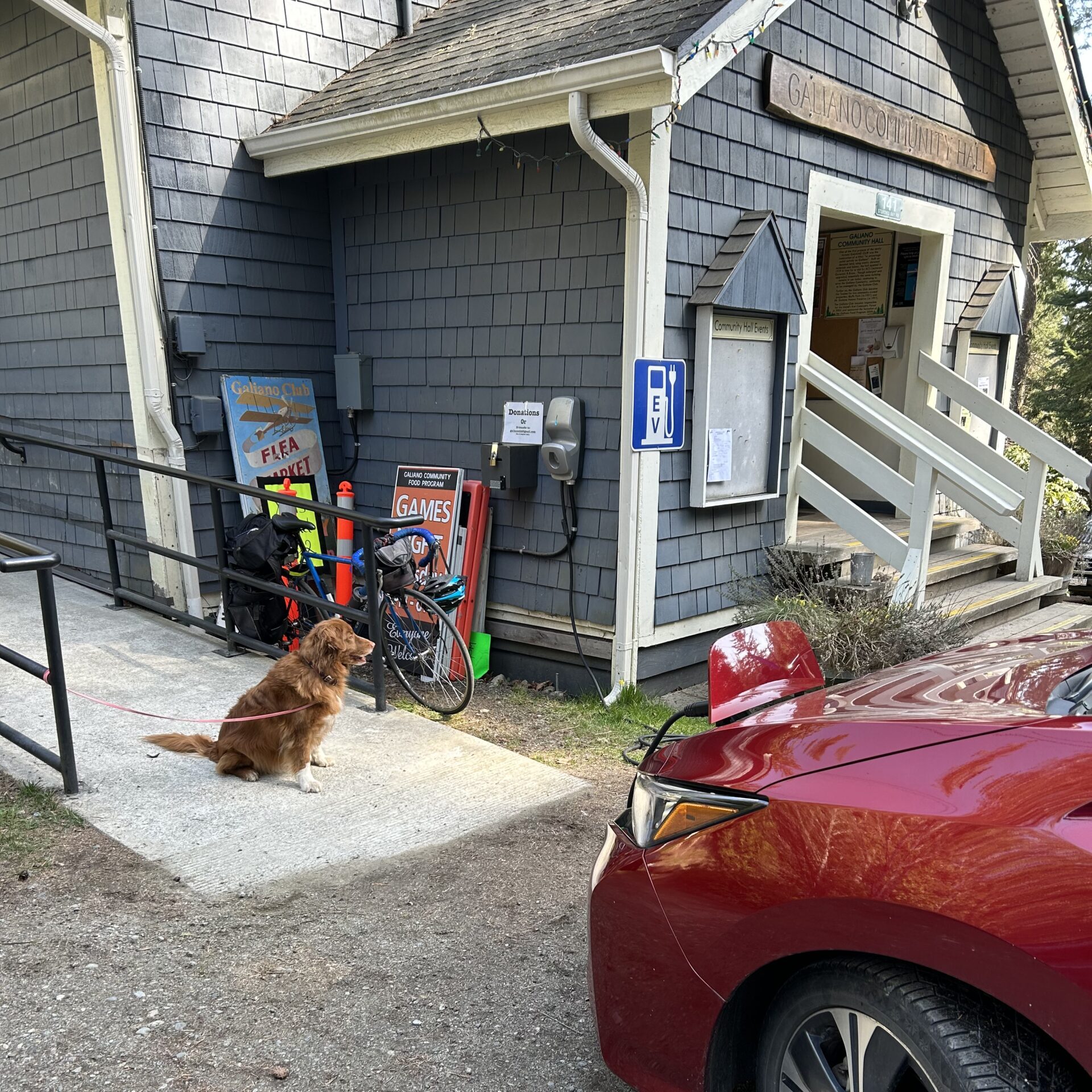Last March and April, BC Hydro held two workshops on net metering as part of a series of engagement activities for their net metering program. As part of the activities, a questionnaire was sent out to participants and net-metering customers to comment on possible policy changes. The questionnaire is now closed but it may be of interest to Co-op members and readers to learn more about the ins and outs of net metering policy-making; and SSREC’s position.
In short, SSREC’s position is: “For now, we should make a very strong effort to support the current net metering policy and NM rate and help the BC Utilities Commission (BCUC) in their initiative to force BC Hydro to do a proper consultation on Virtual (Community) Net Metering”.
BC Hydro will be conducting net metering related engagement activities throughout 2023 – more information and updates are available at BC Hydro Net Metering Program. There are also a variety of ways you can get involved in rate design at BC Hydro.
Guide to respond to BC Hydro’s questionnaires on two Net metering sessions Mar/April 2023
Rank the compensation mechanisms in your order of preference.
Response: Traditional
Don’t rank the others because they are all unsuitable.
Rank each compensation mechanism in your order of preference for commercial customers:
Response: Traditional
Don’t rank the others as they are all unacceptable
General comments about compensation mechanisms
BCH hasn’t provided any evidence that the current system of compensating NM customers in kilowatt hours and reconciling at the end of the year is not working. The system works well for many reasons:
- The currency of kilowatt hours makes sense as it encourages people to conserve energy and be aware of the energy they are using in the correct currency for energy
- Compensation is not monetized, since it trades kWh for kWh, unless people have excess production over the year. Very few people do.
- Reconciling over a year makes sense because of the seasonal variability in energy use, production and climate and it is the simplest
- BCH should be compensating net metering customers for their personal outlay in providing energy to the grid – BCH does not consider the benefit of receiving almost emission-free energy with no outlay.
- Energy input from NM customers helps to declutter the grid and provides voltage and frequency stabilization.
- Value of the Net Metered energy cannot be determined without transparent, credible, science-based GHG/kWh accounting.
- Solar generation specifically and radically reduces GHG intensity by displacing Hydro generation, not just replacing fossil fuels. Decarbonation as a rate design objective (slide 12) and must include accurate GHG intensity per generation type.
- In future, BC Hydro must consider the escalating cost of carbon emissions into rate design, including compensation mechanisms, and take advantage of the extremely low carbon footprint of solar and wind versus large hydro.
Rate Design modifications
No change (status quo)
Why would NM customers pay more for the energy they use than any other BCH customers? On the side of energy consumers, NM customers are not any different than any other users. They pay the same now, and they should always pay the same. The move by BC Hydro to time-of-use billing charges, penalizes working people who have to consume energy when they come home from work to feed their families. They don’t have the option of using energy during the day, for example, because they are working. However, if in spite of the inequality that time-of-day charges create, BCH goes in that direction then NM customers should pay the same time-of-day charges that everyone else does, but they should also receive the increased rate for excess energy that they produce at peak times. Again, linking compensation rates to retail rates makes sense.
Why did BC Hydro not include NM into their current pilot for time-of-use billing?
Also, the workshops did not mention any actual rates at any time. Therefore it is impossible to discuss any rates without context. For instance, rates could be linked to retail rates to compensate for future fluctuations in retail rates.
Time-of-day use is designed for utilities using peaker plants for peak energy use and experience large fluctuations in demand (duck curve, etc) and supply. This is not the case for BCH as the model BCH uses is that stored energy in their reservoirs serves all demand. The only justification for time-of-use for BCH is a money grab with little or no operational justification. Where is the evidence showing that BC Hydro experiences widespread brown-outs due to overloaded transmission/distribution lines and/or inability to pour more water through their turbines?
If BC Hydro is really concerned about grid overload, perhaps BC Hydro should encourage and subsidize stationary batteries for homeowners, businesses, community facilities etc. And encourage distributed generation by low carbon- emitting generation like wind, solar, geothermal, etc.
BCH hasn’t provided any argument for changing the status quo, yet has spent a lot of money trying to weaken, discourage and confuse a program that is a very minute part of its operations (the 6500 customers together contribute less than 0.14% to BC Hydro’s overall generation). Even with exponential growth during this decade, NM will reach less than 0.5% of overall generation. Why is BC Hydro reviewing the NM program again? How does that make sense?
The floating rate (linked to the international wholesale rate, seen as a cheap source of energy for BC Hydro and approved at the most recent NM review by the BC Utilities Commission) made a lot of assumptions about the cost of energy and it turned out that those assumptions were completely wrong. In fact, in 2022 BC Hydro had to pay more per kWh for overages to the net metering customers, than the retail rate. If the compensation rate floats it should simply be linked to the rate that is charged to customers and thus fluctuate with the classification of the customer.
Making it dependent on an international wholesale rate makes no sense. Note that some jurisdictions (e.g. California) no longer purchase energy from large hydro installations because of their environmental impact. BC Hydro would benefit from having more solar and wind in their mix, that is more acceptable to jurisdictions that we sell to who are concerned about biodiversity, climate change and general environmental impacts. Or carbon emissions: emissions for solar and wind are below 10 g per kWh, while large hydro is over 300 g CO2e per kWh.
Comments: the preamble states that the changes are made to encourage customers to generate energy at certain times of the day or year – that doesn’t make any sense because customers cannot control the weather or the day length.
Averaging over a year takes care of this.
The preamble is one sided. BC Hydro states that NM customers avoid paying certain demand-related (not defined) or customer-related (also undefined) costs when their excess generation reduces the amount of energy charges they pay on their bill. That makes no sense. That’s one of the points of NM. BC Hydro only presents their side of the equation: the costs of NM.
But what about the other side of the equation – the benefits. The energy NM customers generate for the grid at their own expense (no cost to BCH) is cheap energy for BC Hydro, free of infrastructure and distribution costs, has 95% lower carbon emissions than hydro, increases transmission efficiency, and decreases wear and tear on the grid that’s reduced from the NM customer’s local generation of energy.
The full ‘value of solar’ never enters into the discussion: Where are statements (and quantification) on GHG emissions savings, contributions to the economy through the creation of a local solar installation industry, removing the need for more expensive and insecure centralized energy, contributions to energy security by creating a distributed source of energy, contributions of distributed generation like solar to grid stability? Any cost benefit analysis has to include two sides of the equation.
Eligibility Criteria – Virtual Net Metering
Should BC Hydro enable virtual net metering?
Yes
What should BC Hydro take into consideration when evaluating the potential for VNM?
Community/VNM must have a dedicated consultation process with experts based on the best available evidence. There are multitudes of working models in Europe and the USA, and collaboration with multiple stakeholders (utilities, communities, ENGOs, experts, solar cooperatives, municipalities, etc.) is essential to develop a forward- looking model best suited to British Columbia.
The program should be very broad, allowing all types of ownership from non-profit to cooperatives to private companies with local shareholders who pay upfront for panels in a VNM installation. The program should be innovative – allowing for example someone to ‘buy’ panels to put on the rooftop of a neighbour’s house and be credited for the energy produced by the panels they own. This can happen if a neighbour’s house is more suitable for solar, for example. Integration with local microgrids is essential.
There would be strength in the diversity of the program. BCH should start with communities so that everyone in a community can participate, be they renters, owners who don’t have an appropriate location for solar, owners who
don’t feel they can afford solar but want it, businesses who want to contribute to the grid and reduce their GHG emissions. At least BC Hydro should be a positive participant in VNM initiatives and simplify and ease the interconnection and billing processes. VNM is an equalizer in the sense that it creates an opportunity for everyone – no matter the type of housing or location of the housing – to engage in a modern, proven, inexpensive decarbonization technology.
Why is BC Hydro including ‘excess energy’ into the definition of CNM/VNM. That contradicts the generally accepted definition.
Renting/Leasing arrangements.
Yes they should allow renting/leasing arrangements
(missing in the questionnaire) ???
Generation Capacity limit
Should BC Hydro increase capacity limit?
Yes (it is not clear whether this applies to C(V)NM or NM in general. Either way, answer is Yes
What is reasonable capacity limit for BCH to consider?
It is not clear why BC Hydro would want to limit capacity when BCH is not paying for the actual solar installation. The capacity should not be a priori limited for a community facility as the capacity will depend on the size of a community. For example, you could have VNM on community buildings in a city and citizens could purchase the equivalent of x number of panels and have the energy generation taken off their hydro bills. It’s simply a billing problem. BCH has not created any justification for a capacity limit. On the one hand, BCH says they will need more energy as we electrify; on the other hand, BCH is trying to discourage the cheapest energy that they have access to, which is solar, where the upfront cost of the infrastructure is not paid by BCH. How does this contradiction make sense?
With massively increasing (or abandoning) the capacity limit, BC Hydro should also adjust the review parameters (simplify) and review time for ‘complex’ net metering. Community Net Metering is an essential part of the modern grid, addresses important energy equity issues and delivers a community service – something that falls squarely into the preview of a public utility. Forcing a client who wants to install a 1 MW solar farm to split this up over four or five meters, bills etc. is a waste of infrastructure, effort and monies.
Considerations for evaluating the potential for increasing the 100 kW capacity limit for net metering?
What does this question mean? The current (extremely low) limit may be based on the interconnection capacity. But this can always be increased if a particular installation exceeds the capacity. BCH is doing this all of the time. For example, BCH (i.e. the BC tax payer) is paying for a massive transmission line for LNG Canada – at much greater cost than any increasing in interconnection capacity can even be imagined for community NM customers. Again BCH needs to consider benefits to the grid for providing the energy with no upfront costs to BCH, benefits to BC by reducing the costs of needing to create additional centralized energy, with all of its environmental and economic impacts.
It is not clear whether this applies to NM in general or Community (Virtual) Net Metering? Without these specifics it is impossible to reply to this question.
Besides, the 100 kW cap was already outdated over half a decade ago, and simply put the brakes on people looking forward – a similarly regressive move to stick with 100 kW as the permanent icing of the Special offer program (SOP).
Alternative approach based on a % of annual demand
No
BCH has already claimed that the annual demand in the province is going to increase substantially (where are the data to support this?). If those projections are correct then there would be no limit to NM. Instead, BC Hydro should be encouraging as much production of solar, wind, geothermal, microhydro as possible. This would save BC Hydro, and the BC taxpayer, a fortune over the long run in capital expenditures.
Also, without any indication of specific issues, it is impossible to evaluate the pros and cons of alternate designs.
What should BCH take into consideration when evaluating the potential for changing the eligibility criteria to define generation capacity?
BCH needs to develop a wide-tent, workable NM policy first, before discussing eligibility – it should be open to all customers of BCH – residential, commercial, community, municipal – it doesn’t matter. Everyone is equal and should be. The kWh have the same value whoever produces them.
General comments on eligibility criteria (see above)
Without being provided any framework, it seems impossible to respond.
Net metering as a planning resource
This is a rather confusing point. BC Hydro started this questionnaire off as a rate review exercise, now BC Hydro is looking for input into NM as a planning resource with two highly specific questions without any framework. BC Hydro tried its best to downplay and obfuscate the value of net metering in the 2018/2019 proceedings before the BCUC.
- Compensation for grid services – This can only be answered when ‘grid services’ are properly defined. Here BC Hydro expects input into things that BC Hydro specifically denied and dismissed earlier, like avoided transmission and distribution costs.
- Reward the addition of battery storage – Yes, of course, programs to support battery storage will be essential and welcome. But how much, by whom and where? For homeowners ? (equity issue), regional districts, communities, schools, public buildings, etc – should have been started years ago. However, if this is the thin wedge on the way to (consumer-unfriendly) buy-all, sell-all or net billing – then definitely not.
How this works in the context of time-of-use needs to be explained before considering this question in the context of net metering and community net metering. The question should be reworded to include the integration of mobile batteries (electric vehicles and Vehicle to grid technology). We have smart meters. They go both ways no matter if the energy source is solar or an electric car battery or a stationary battery. EU utilities have found this to be a great advantage to them to meet peak demand, while stabilizing voltage and frequency.
General comments on net metering as a planning resource:
What exactly does this mean? Is this a projection of how much net metering the utility wants? Why would BC Hydro be limiting the input of the cheapest energy with the lowest emissions – without actually paying for the infrastructure and merely contributing proper interconnection. I would ask what is your rationale for wanting to limit the program? I think there is a better argument for wanting to expand the program way beyond your projections. At this moment it is a very small program and you do not encourage it, so you are projecting that the program will remain a small component of BCH’s overall capacity. A better question would be: What tools can BCH use to increase NM program so that a greater percentage of the projected use of energy in the province comes from net metering customers – which is by far the cheapest energy to BCH considering you don’t pay for the infrastructure.
An RS 1289 rate hearing is not the appropriate place to consider ‘net metering as a planning resource’ for the following reasons:
-
- Grid services, transmission and distribution costs, and battery solutions should be considered in a BC Hydro policy before application to any rate amendment hearing
- 2020 Net Metering report considered customers to have a “low level of understanding” of the various programs terms and conditions. Without effort from BC Hydro to improve this situation, adding planning resources to the rate will exacerbate this knowledge gap by adding complexity.
Moving away from One size fits all
No
BC Hydro should not have different programs for different customers. They already have different rates for residential and commercial customers and BCH already has rates below (alleged) generation costs for some commercial customers. It is hard to see how such differentiation would be any better in the context of a net metering program. This would lead to BCH arbitrarily saying that the energy provided by one group is more valuable than the energy provided by another group – which is simply not true, unless the huge potential differences for decarbonization between wind/solar/geothermal and hydro are taken into consideration (which they aren’t). Otherwise, a kilowatt hour generated by a remote community, a municipality or an individual is the same value.
Different customer groups?
‘One size fits all’ is adequate. There is no need to complicate the issue.
General comments
Without additional information on specifics on how BC Hydro proposes to move away from traditional net metering, it is impossible to add anything useful. BC Hydro only presents two alternatives (of their choice).Both are derived from examples pushed in the USA by for profit utilities and energy generation mix that cannot serve are useful models for BC.
Rate design general feedback
Energy security. BC Hydro has not considered that centralized power generation leads to a very vulnerable energy supply in case of terrorism, conflict or a major climate change event. Distributed energy resources (DER) ensure some security and BCH has not considered this at all. A case in point is that in Ukraine, where the energy infrastructure is under attack, a solar farm that was attacked was up and running within a day whereas it’s taken much longer, and more $$ to get other large centralized facilities up and running.
Modernization – Solar and wind are the way of the future. At the moment BCH is focused on an outdated mode of energy production – large centralized hydro plants with predictable cost-overruns. BCH doesn’t consider the incredible environmental impacts (loss of biodiversity, loss of forests, loss of carbon sequestration, loss of agricultural land, taking water from watersheds and deltas (i.e. Athabasca delta), impacts on Indigenous communities, impacts on livelihoods (i.e. farmers) by the centralized approach. BCH needs to move into the modern age and not leave BC behind.
Decarbonization – totally ignored in the presentations.
Rate design workshop
Not overly useful. No proper background for newbies was provided, and not enough detail for NM customers or solar installers. Worse, this was not a proper workshop with constructive back and forth between presenters and attendees. It was simply a one-sided presentation with talking heads. BC Hydro had predetermined the options put on the table and did not allow proper input from the workshop participants. The ‘workshop’ was not recorded or made available to the attendees or the public, which really is standard procedure these days. Questions in the chat were not answered (even the simple ones), while many others (some really good ones) were answered with ‘we’ll get back to you on this’ – useless to everyone and also not subject to proper scrutiny. The reason for the rate design review was never stated.
This type of workshop falls short of proper (and essential) transparent consultation. This was a unilateral information session. No more, no less. None of the many questions raised were taken into consideration for the questionnaire, again confirming the one-sidedness of the presentation and the reluctance of the utility to listen and learn.
In the future, such workshops must be organized and guided by an independent negotiator, with clear intent of broad direction, breakout groups, absence of preconceived notions and siloed ideas, and much more time must be allowed for multilateral discussions; it should be a true ‘workshop’ where the outcomes are not predetermined and pre- narrowed down to the wishes of the utility. Presentations and chat must be recorded and made available broadly.
Results should be compiled in a transparent matter and subject to further open discussion.





